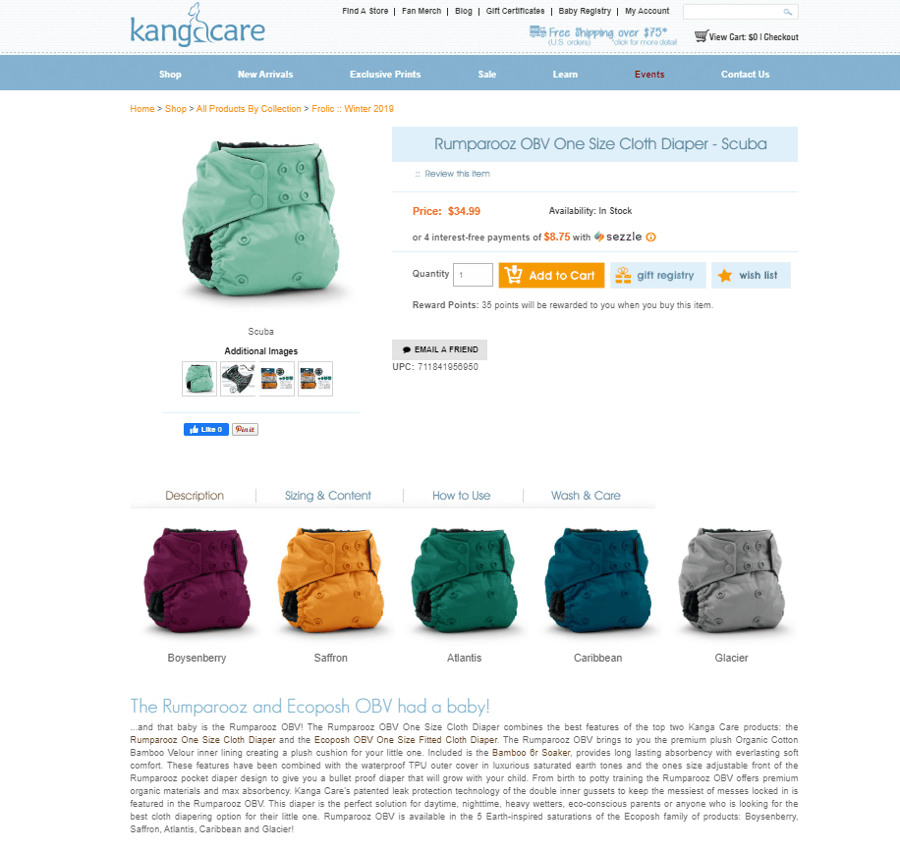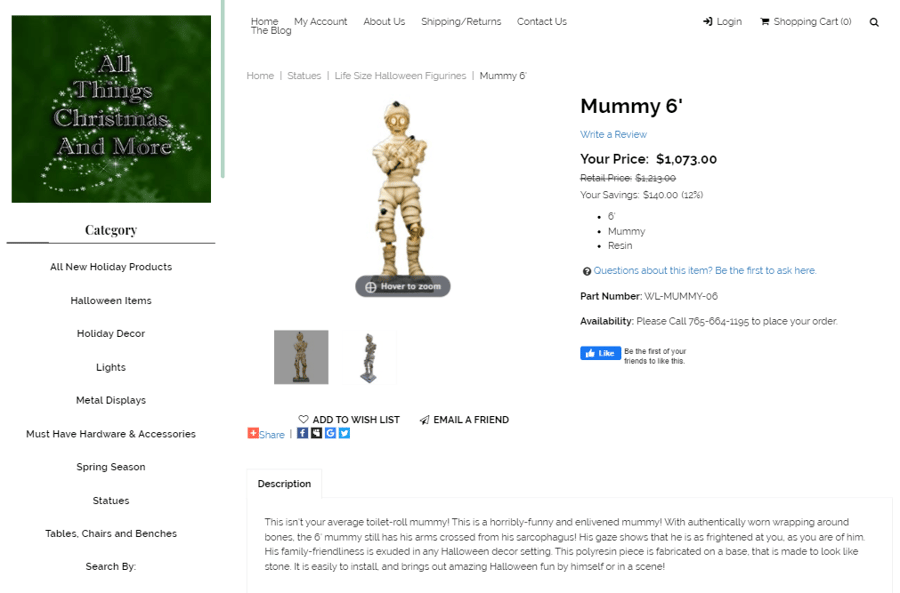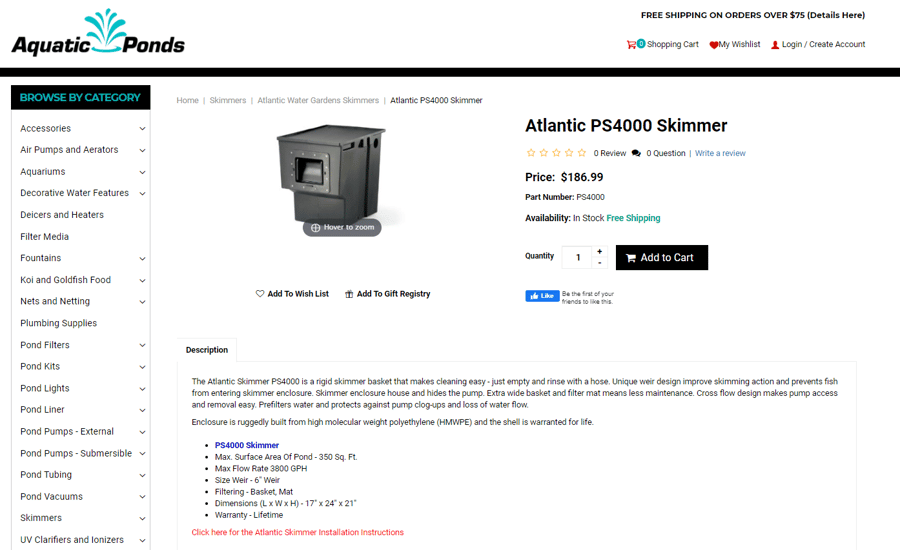
What should you do with a product page, besides allow people to add the product to their shopping cart? Obviously, you must include the product’s name, so potential customers can find the page. Product pictures are arguably just as vital for showing shoppers what to expect from a purchase. A few specifications may be necessary for aspects like measurements, condition, ingredients, and so on.
While all the aforementioned aspects are important, the inclusion of a well-written product description can tie everything together. This is the space where you can truly make your arguments for why the reader should buy the product. If you want some guidance, we can help. Here is some advice on how to write online product descriptions that sell.
Give Information Your Customers Would Want
We contend that every product description should accomplish at least two things. The first is to provide the most important information about the products. Visitors may be able to gleam plenty from the name, product pictures, and specifications listed on the side. They may already know something about the product and have found the page on purpose. However, some visitors are only exploring your site, or sifting through search engine results. They may know nothing about your product, and they are the primary audience for your descriptions.
The product information you should include really depends on the kind of product and your target demographic. For example:
- Not every item needs a health warning. You may want to include one for non-prescription medicines, supplements, and supplies for pets or children.
- If you offer niche items primarily purchased by collectors, then they will appreciate extensive detail.
- If you sell books, then prospective readers will need a summary and may appreciate some professional reviews (choose positive ones, of course).
In general, the product description must convey the appeal of the item. Perhaps it provides a practical solution to a problem or inconvenience. Perhaps it fills an emotional need, bringing fun or comfort or satisfaction. Whatever makes the product worthy of purchase in the eyes of your customer, it should be clearly illustrated in the description.
All that is why you should try looking at your product page from the customer’s perspective if you need help figuring out what to write. What information would they want to know before making a purchase? Moreover, what aspects of the product may persuade them to buy?
Use Keywords with High Search Traffic
The other essential job of a product description is to build up a substantial search engine optimization (SEO) score. For anyone new to eCommerce or otherwise unfamiliar, SEO scores determine where a page appears in search engine results for specific terms.
Your goal is to appear on the very first page, if not the very first result, for terms that many users look up. Every website craves that status. Although you may have competitors who are completely unaware of SEO, you must act as if all of them are fighting for the top. There can be only one.
You can employ many different methods and practices to boost your own score and curry favor with search engine algorithms. One way to do that is to sprinkle popular keywords throughout the copy on your website. The descriptions on product pages can be goldmines for SEO because they provide plenty of opportunities to organically include relevant keywords. The word “organically” is important there because simply jamming the terms in there at random is not enough by most algorithms’ standards.
If you do this for all your product pages, your website might even be seen as a domain authority — which is excellent for site rankings. At the very least, you improve your chances of drawing more people to your business without having to spend a dime on advertising.
Be Creative with Your Writing
Aside from taking care of those two essential aspects, everything else about the product description is really up to you. Only you (or the assigned copywriter and editor, as may be the case) can decide everything about its style. The piece may be short or long, bullet points or paragraphs, detail-oriented or salesy. You just have to make sure that your product description, well, describes the product.
Nothing is stopping you from keeping the text rote. You could absolutely choose to only give hard facts in purely functional prose. You could count on product features, images, and website aesthetics alone to make your wares look more appealing than whatever your competitors are peddling.
However, product descriptions are an excellent opportunity to really attract and retain the attention of visitors. Therefore, you may want to go further with your writing. Instead of relying on clichés, create something memorable, intriguing, and even meaningful. Paint vivid pictures with your words to reveal what photography alone cannot. Sprinkle colorful adjectives into the copy. Find unique ways to hook your intended customer.
The point is that, depending on your brand, customers may gravitate toward descriptions that go beyond the norm. In fact, the creativity of those descriptions may go a long way towards distinguishing your business from your competitors. With these benefits as possibilities, the matter is at least worth considering.
Know Your Creative Limits
With that said, cleverness should not be the only goal for your writing. As tempting as it may be to punch up the copy with all kinds of flourishes, you cannot simply unleash your id. After all, you have products to sell online.
There are at least a few ways to restrain yourself. For example, the tone of your product descriptions must reflect the tone you want to set for your brand. Certain businesses can get away with product descriptions that are, for example, riddled with puns and jokes. Others need to veer more on the side of good taste and find other ways to engage readers. Your job is to know your brand well enough that the descriptions fit into it.
Even if your brand does allow you to go a bit off-kilter, leaning too much into that may alienate some visitors. An overreliance on wordplay, alliteration, and similar devices may come off as obnoxious, especially if you do it simply for the sake of doing it. Some may even feel that the business is not taking their prospective customers seriously. Keep your audience in mind as you are writing.
Finally, make sure that your creative choices do not obscure the informative value of the product descriptions. Nor should your creative choices bring down the overall SEO value of the pages. You must remember your primary responsibilities for this copy. When you have a choice, it is often better to side with those than with pizzazz.
Include Links to Blog Posts
Product descriptions should be long enough to inform customers on the important details, but short enough that they are not overwhelming. Few users check out descriptions to read an essay. When users do wish to read an essay, they prefer blog posts.
You can use these longform pieces of content to expand on what you wrote and provide even more details about your products. This may, in turn, pique the interest of your readers and convince them that your product is worthwhile. Of course, your articles should not be advertisements — most internet users are too savvy for that. Instead, they should, as we said before, give information that your customers might want. Potential topics may include:
- A how-to guide on using the product to greatest effect
- A showcase of variations on the product, such as different colors and designs
- An exploration on the origins of the type of product
- A list of other products within the same line
- Many more — just like when writing your product descriptions, you should be creative!
Maintaining a blog requires time and resources — not to mention great writing skill, at least a little research, some creativity. With that said, the benefits may make the effort worthwhile. The one most relevant benefit to this article is SEO.
You can boost the value of both the blog post and the product page by inserting a link to one page within the text of the other. When your webpage receives more links, search engines are more likely to view it as an authority on its primary keywords. Feel free to spice up your descriptions with links to relevant blog posts — readers may just follow, then return with greater interest.
Take Inspiration from Great Product Descriptions
Research is always good for any writing project, and product descriptions are no different. You may gain a lot from reading ones that appeal to you and assessing why you find them so appealing. With some critical thinking and close reading, you might learn a secret you could use for your own business. To show you what we mean, here are some deep dives into a few product descriptions that we admire.
Rumparooz OBV One Size Cloth Diaper - Scuba (Kanga Care)

This item is the result of a mix between two of Kanga Care’s signature of one-size cloth diapers: Rumparooz and Ecoposh OBV. Like with most other product descriptions on the site, the copy here is of excellent quality. It clearly illustrates the benefits of both lines and how this product embodies many of the best of them.
More importantly, it uses all of that information as the selling point, rather than hitting readers over the head with shallow marketing buzzwords. In this sense, businesses that are confident in their products let them sell themselves.
Mummy 6’ (All Things Christmas and More)

Some types of products lend themselves more naturally to creative and amusing copy, and this Halloween statue is a great example. The text comes to life with jokey descriptors that are specific to the product — the opposite of boilerplate writing.
It does not get lost in the humor, either. The description takes time to highlight important details about the product and even provide some ideas for how to use it. Those who find the item absurd from its concept, name, and image just might change their minds after checking out the copy.
Atlantic PS4000 Skimmer (Aquatic Ponds)

When people wish to buy something for a practical purpose, they tend to focus on the practical details. At that point, you may want to drop the humor and stick to the meat of the subject, as in this example. The description immediately defines the product type and outlines the central features of the item in question. It includes directions for using it, the purposes of each component, and the benefits of certain design aspects. Finally, it includes a bullet list with specifications.
You can sell just by being straightforward. Depending on the product and demographic, your potential customers may respect you for it.
Wrapping Up
All of the tips described above is designed to show the way in how to write persuasive product descriptions. As you can see, you and your copywriting team may have plenty of leeway for how to approach the task. Much of it depends on your products and your brand, so you should feel free to adjust our advice as needed for your situation.
With that said, you should never lose sight of your goals for your product descriptions: boosting sales, increasing SEO scores, and attracting attention. Nor should you ever forget your responsibilities to your customers, who are only reading your descriptions because they are thinking of trusting you. As long as you keep your target audience’s needs in mind, your writing should be fine.





Leave a reply or comment below